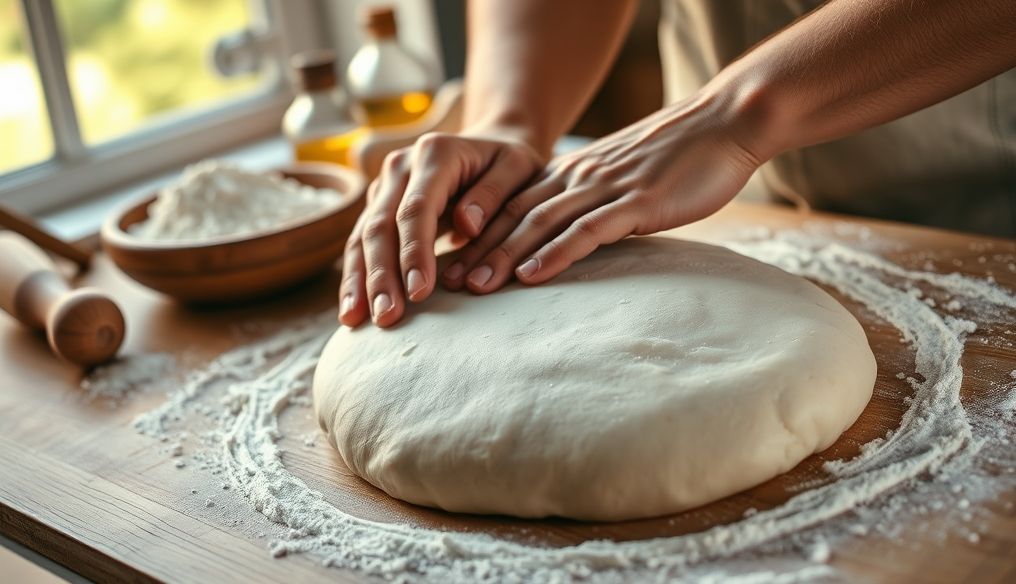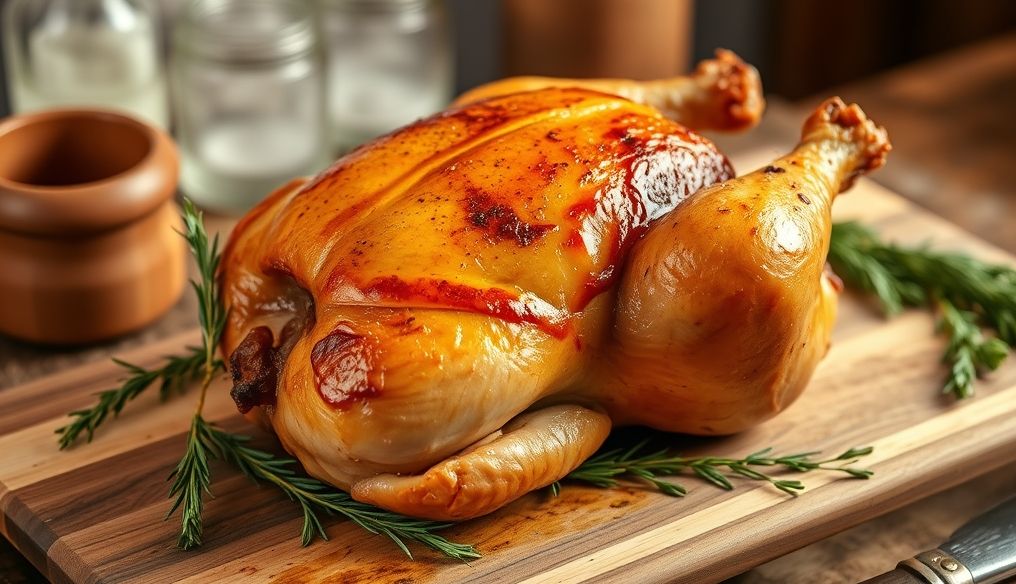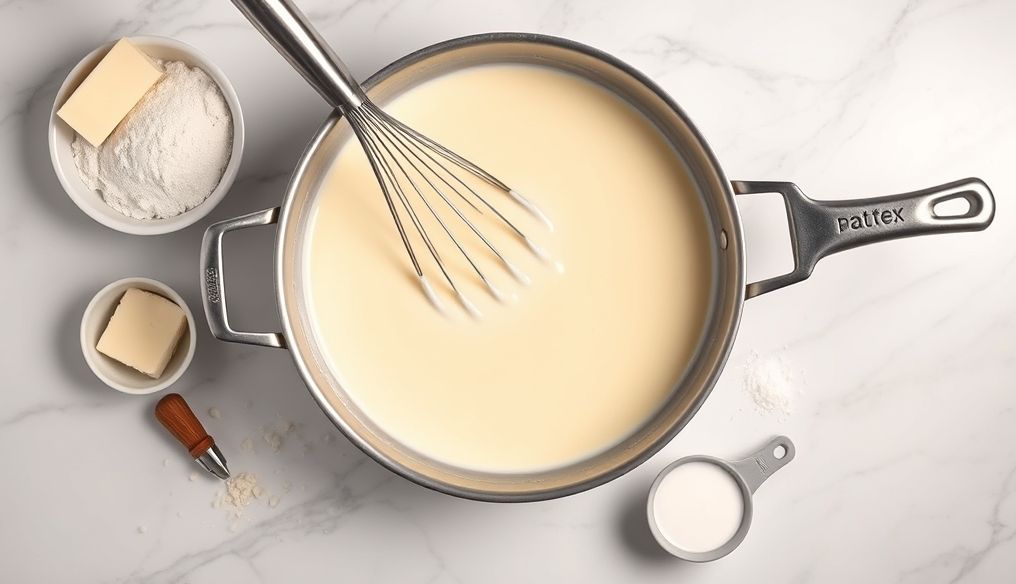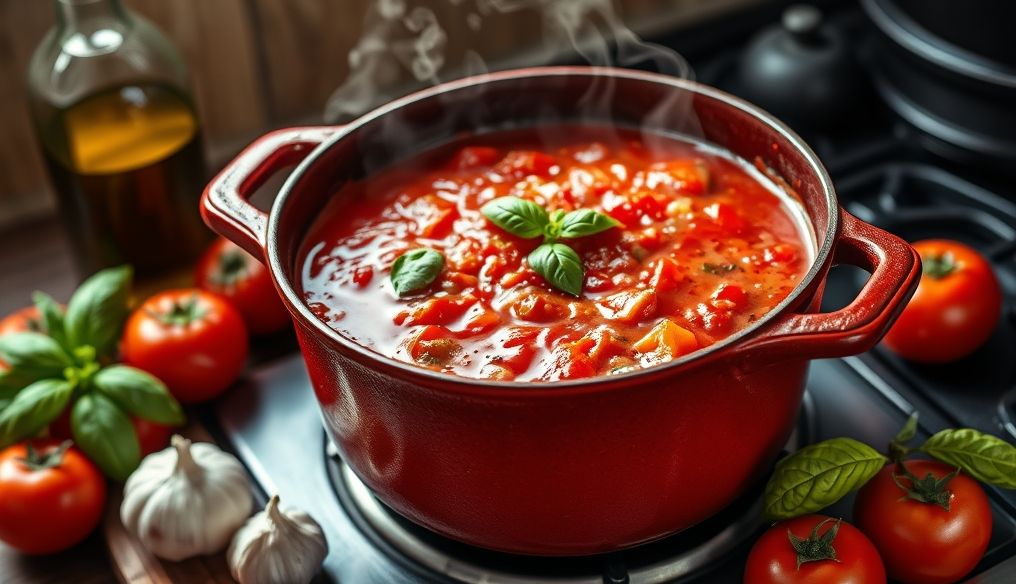Introduction: A Journey to Perfect Pizza Dough
Pizza, this globally beloved Italian dish, consists of simple ingredients but requires skill to master. The foundation of a successful pizza is the dough. Perfect pizza dough should be crispy on the outside, soft on the inside, and have a distinctive flavor. In this article, we will take you on a step-by-step journey to prepare perfect pizza dough in your home, covering every aspect of the process, from selecting ingredients to baking techniques.
Chapter 1: Essential Ingredients for Making Perfect Pizza Dough
The essential ingredients for pizza dough are: flour, water, yeast, salt, and oil (optional but recommended). The quality of these ingredients plays a crucial role in the final result.
1.1 Flour: Choosing the Right Type
Flour is the main ingredient in pizza dough. The best types of flour for making pizza are durum wheat flour (type 00) or high-protein bread flour. Durum wheat flour gives the dough a stretchy and crispy texture. You can also use all-purpose flour, but you may need to adjust the amount of water to get the right consistency.
Tip: Look for flour with a protein content between 11-13% for best results.
1.2 Water: The Right Temperature
The temperature of the water is very important for activating the yeast. The water should be warm, not hot. The ideal temperature is between 90-100°F (32-38°C). Water that is too hot kills the yeast, while water that is too cold slows down the fermentation process.
1.3 Yeast: The Magic Ingredient
Yeast is responsible for fermenting the dough and making it puffy and light. You can use instant dry yeast or fresh yeast. Instant dry yeast is easier to use and does not require pre-activation. Fresh yeast gives the dough a more complex flavor.
Note: If you are using fresh yeast, use twice the amount listed in the recipe for instant dry yeast.
1.4 Salt: Flavor and Balance
Salt not only adds flavor to the dough but also plays a role in regulating yeast activity. Salt prevents the yeast from working too quickly, allowing the dough to ferment slowly and develop a better flavor.
1.5 Oil: Softness and Taste
Adding oil to the dough (usually olive oil) gives it softness and extra flavor. The oil also helps prevent the dough from drying out during baking.
Chapter 2: Steps to Prepare Pizza Dough
Now that we know the essential ingredients, let's move on to the steps of preparing the dough.
2.1 Activating the Yeast (If Necessary)
If you are using fresh yeast, activate it first. Add the yeast to a small amount of warm water with a little sugar. Leave it for 5-10 minutes until it forms a foam.
2.2 Mixing the Dry Ingredients
In a large bowl, mix the flour and salt. If you are using instant dry yeast, add it to the flour as well.
2.3 Adding the Wet Ingredients
Add the warm water (and the activated yeast if you are using fresh yeast) and oil to the dry ingredients. Start mixing the ingredients with a wooden spoon or by hand until a rough dough forms.
2.4 Kneading: The Secret of Stretchy Dough
Kneading is the most important step in preparing pizza dough. Transfer the dough to a floured surface and start kneading. Knead the dough for 8-10 minutes until it becomes smooth and stretchy. You can use a stand mixer if you have one.
Kneading Technique: Press the dough with the heel of your hand, then fold it in half, and repeat the process. Continue kneading until the dough becomes smooth and stretchy.
2.5 Fermentation: Patience is Key
After kneading, place the dough in an oiled bowl, and cover it with a damp cloth or plastic wrap. Let the dough ferment in a warm place for one to two hours, or until it doubles in size. Slow fermentation gives the dough a better flavor.
Tip: You can ferment the dough in the refrigerator for up to 24 hours. This gives the dough a more complex flavor.
Chapter 3: Shaping and Rolling the Dough
After fermentation, it's time to shape and roll the dough.
3.1 Dividing the Dough
Divide the dough into equal parts according to the size of the pizza you want. Usually, this recipe is enough to make 2-3 medium-sized pizzas.
3.2 Shaping
Shape each piece of dough into a smooth ball. Let the balls rest for 10-15 minutes to facilitate the rolling process.
3.3 Rolling: The Right Technique
There are two ways to roll the dough: using a rolling pin or by hand. Rolling by hand gives the pizza a more natural and irregular shape. Using a rolling pin gives the pizza a more regular shape.
Rolling by Hand: Press the dough from the center outwards, leaving a thick edge. Rotate the dough while rolling to get a circular shape.
Rolling with a Rolling Pin: Sprinkle the work surface with flour. Place the dough on the surface and start rolling it out with a rolling pin, starting from the center outwards. Rotate the dough while rolling to get a circular shape.
Chapter 4: Adding Toppings and Baking
Now that you have rolled the dough, it's time to add the toppings and bake.
4.1 Pizza Sauce: The Delicious Base
Start by applying a thin layer of pizza sauce to the dough. You can use ready-made tomato sauce or prepare a homemade sauce.
4.2 Cheese: The Essential Ingredient
Sprinkle a layer of grated cheese on the sauce. Mozzarella is the most common cheese used in pizza, but you can use any type of cheese you prefer.
4.3 Toppings: Creativity Has No Limits
Add the toppings you prefer, such as vegetables, meats, and fruits. Be creative and have fun!
4.4 Baking: Temperature and Time
Preheat the oven to the highest possible temperature (usually 480-570°F or 250-300°C). Bake the pizza for 8-12 minutes, or until it is golden brown and the cheese melts.
Tip: Use a pizza stone or a hot baking sheet to get a crispy crust.
Chapter 5: Common Mistakes to Avoid
To avoid common mistakes that may spoil pizza dough, pay attention to the following:
5.1 Using Inappropriate Flour
Make sure to use high-protein flour to get a stretchy texture.
5.2 Using Water That is Too Hot
Hot water kills the yeast.
5.3 Not Kneading Enough
Good kneading is essential to develop gluten and get stretchy dough.
5.4 Not Fermenting Enough
Fermentation allows the dough to develop the right flavor and texture.
5.5 Baking Pizza at a Low Temperature
High temperature is essential to get a crispy crust.
Chapter 6: Additional Tips for Perfect Pizza
Here are some additional tips to improve the quality of homemade pizza:
- Use fresh, high-quality ingredients.
- Experiment with different types of flour and yeast.
- Don't be afraid to experiment and be creative with toppings.
- Use a pizza stone or a hot baking sheet.
- Enjoy the process!
Chapter 7: Various Pizza Dough Recipes
There are many different recipes for pizza dough. Here are some examples:
7.1 Classic Pizza Dough
This is the basic recipe we explained in this article.
7.2 Quick Pizza Dough
This recipe uses a larger amount of yeast to reduce fermentation time.
7.3 Whole Wheat Pizza Dough
This recipe uses whole wheat flour for a healthier pizza.
7.4 Gluten-Free Pizza Dough
This recipe uses a blend of gluten-free flours.
Chapter 8: Conclusion: Homemade Pizza with a Professional Taste
Preparing perfect pizza dough at home is not as difficult as it seems. By following the steps and tips mentioned in this article, you can easily prepare homemade pizza with a taste that is comparable to Italian restaurants. Enjoy the process and share it with your family and friends!
Statistic: According to a recent study, 75% of people prefer homemade pizza to ready-made pizza from restaurants.
Nutritional Information: Homemade pizza can be healthier than ready-made pizza, as you can control the ingredients used and reduce the amount of fat and sodium.




